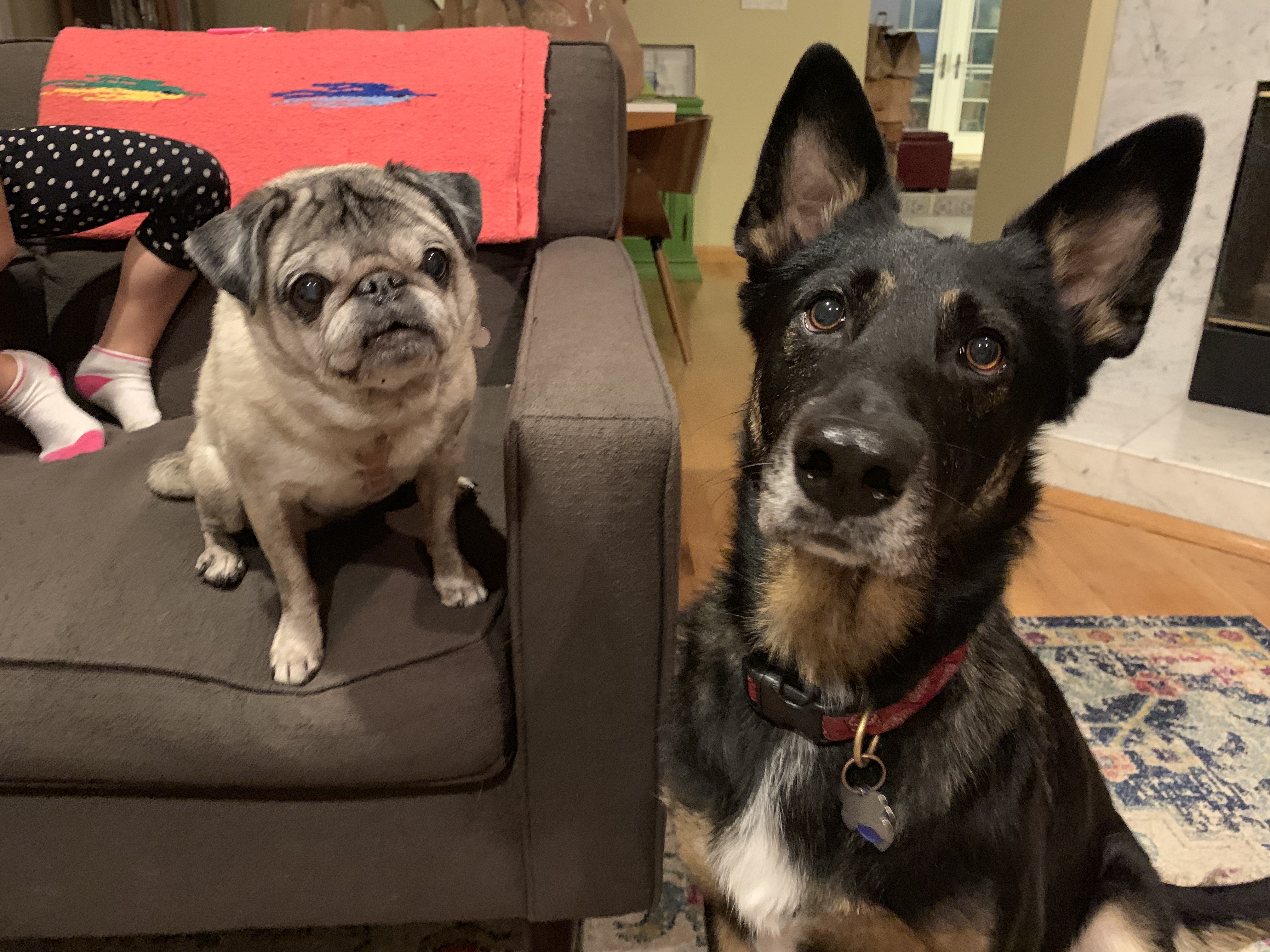Teaching a Rescue Dog to Focus to Help Stop His Dog Aggression
By: David Codr
Published Date: December 6, 2018
For this Westchester dog training session, we teach recently adopted 4 year-old German Shepherd Murray (Pictured here with his pal and room mate 13 year old Pug Zoe) the Focus exercise to help stop his dog aggression.
Murray’s guardians had developed a smart way to introduce the dog to new people; taking the dog outside to meet the person who was waiting along with members of the family. I added some high value treats to the equation when he met me and shared a few other tips to build off of what they already had in place like walking together for a few minutes before heading inside.
We spent the first part of the session discussing his issues as well as the techniques a dog trainer the rescue group sent to help with his dog behavior problems. Usually sending a professional to help is a great idea, but not if they practice force, punitive or punishment based methods. Sadly this was a “balanced trainer” which is a nice way of saying the trainer uses force, dominance and punishment. Many German Shepherd trainers used to use those methods, but stopped once they became aware that there was a much better way that didn’t involve causing the dog pain or discomfort.
Because this trainer attempted to use force, Murray became aggressive. Fortunately his new family recognized the force approach wasn’t working and stopped using this methods. After searching for positive dog training, they found a dog behavior expert to come in and help. Im hoping that after this session they will recommend me to the rescue group so that we can help other dogs they place with modern, positive based dog training methods.
One of the force free dog training methods I like to use is a Focus Exercise. This is a great way to redirect a dog’s attention away from things it may react to and the way I teach it, reduces the production of cortisol (the stress hormone) in the dog’s blood. You can learn how to teach a dog to focus by watching the free dog behavior training video below.
I coached the guardians through the focus exercise and went over how often to practice it so they can develop a strong redirect command. Then I walked them through using it in practical applications. It will be important to get to the 15 second focus inside, then outside, then on walks with no dogs around before they start trying to use it as a practical command. Training a dog to focus is easy, but requires frequent practice session where you progressively increase the duration.
We talked a bit about the importance of exercise and I suggested some creative ways other than walks. Getting Murray more daily exercise (in short sessions every 2,3 or 4 hours) will help reduce his stress and make fixing these problems easier. They can also exercise him before walks to make them more productive or set him up for success before a guest comes to visit.
Next I suggested some rules, ways to add structure, how to reward desired behaviors and some items to get for Murray to chew on (water buffalo horn, antlers, real bones, flavored Nylabones and eatable items like bully sticks, kneecaps, etc) to help him work out mild stress.
Murray is not an aggressive dog. He is just a little rough around the edges. Now that he has a loving family looking out for him, he can start to relax and develop trust and confidence when meeting new people.
Im hopeful that the changes we put in place will stop Murray’s aggression towards other dogs and people, but if he is still acting this way in a month, I asked the guardians to let me know so we can set up a follow up session to add in more solutions to his aggressive dog behavior.
To help them remember the positive dog training tips we shared in this in home dog training session in Westchester, we shot a roadmap to success video that you can watch below.
Categorized in: Dog Behavior


